Architectural material trends for 2021–2022 have already been discussed extensively. The moment has come to discuss the upcoming architectural trends that will influence the design and appearance of our homes and apartments. Finding an exterior, interior and domestic architectural solution that perfectly matches your mood and the most recent trends in architecture is essential in today's society where the harmony of the interior and exterior is valued everywhere, especially since architects are a great source of unusual ideas.
Similar to 2022, 2023 emphasizes cutting-edge and developing technologies, robust architectural features, and responsible consumption. It should be mentioned that modern architecture serves as a sort of mirror for societal changes. The utilization of recyclable materials, alternative energy sources, and extreme environmental care will therefore once more take center stage. First things first, though: let us introduce to you seven architectural material trends that we will be learning more about in the upcoming season.
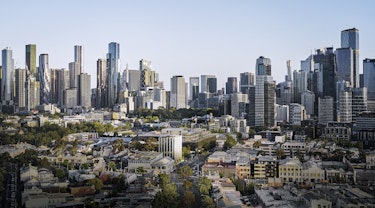
The idea of being as near to nature as possible has been aggressively pursued by architects during the last few years. Therefore, a true synergy between the active use of natural solutions and a considerate attitude toward the environment takes center stage in 2022–2023.
1. Hempcrete
The search for sustainable substitutes for concrete, one of the most popular but unsustainable building materials, has increased this year. This year, bio composite materials like hempcrete have gained popularity, and many designers are promoting their use. The modular construction blocks of hemp plant and lime, according to architect Wandile Mthiyane, will one day improve the built environment. Hempcrete weighs half as much and uses less energy as concrete while providing the same durability and insulation. Hempcrete is a very promising material since it is quicker to construct with, simpler to work with, and offers good insulation. Additionally, hemp hurds feature pores in their structure that may absorb water and release it when the conditions permit, making hempcrete well-suited to resist humid environments.

Credit: Architizer
2. Bamboo
Because of its tensile strength, sustainability, and capacity for rapid development, bamboo has attracted the attention of the architectural community worldwide. Due to the optimal growing climate, it has primarily been employed in Asia and South America, where it thrives in profusion. Bamboo has a 30% greater ecological benefit than other plants in terms of oxygen release, which helps to create more environmentally friendly constructed environments. Not to mention that it is a fantastic material for detailed and sculptural work due to its elastic and lightweight qualities. Many businesses are attempting to create the bamboo treatments required to extend the material's lifespan by making it resistant to moisture because they see the promise of this material.
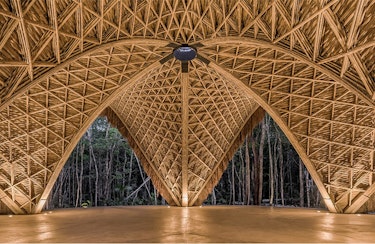
Credit: RTF
3. Graphene
Graphene is yet another substance to watch out for in 2023, despite being in the early phases of research and testing. The thinnest material known to humankind, graphene is two hundred times stronger than steel and has incredible durability. In addition to being strong, highly conductible, and light-absorbing, graphene also exhibits antimicrobial properties. Researchers have started investigating the potential of graphene-reinforced composites as a green replacement for concrete because of their promising features. Additionally, the conductivity of graphene has drawn the attention of urban planners interested in creating smart cities. Although the material's antimicrobial qualities offer hope for hospital architecture.
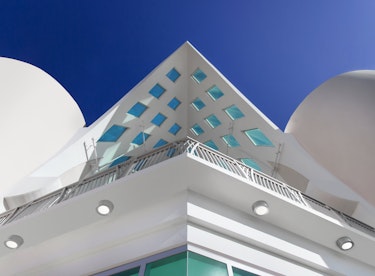
Credit: CAD details
4. Microalgae
Designers have changed their perspectives on the potential of architecture this year, from static structures to living ecosystems. To produce renewable energy and filter the air, architects are looking into the feasibility of embedding microalgae into building facades. Microalgae are a type of photosynthetic organism that can produce oxygen and absorb carbon dioxide through the process of photosynthesis. When microalgae are embedded into a façade, the built environment becomes a means of producing biofuel and storing carbon. Therefore, the constructed environment has the potential to transform into a dynamic ecosystem with cleansed air and readily available biofuel with the adoption of microalgae.
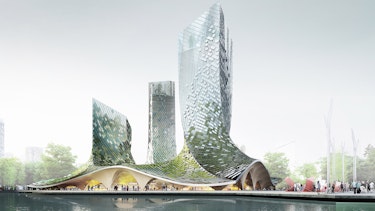
Credit: Dezeen
5. Insect-Infested Timber
Materials that were previously unsuitable for construction can now be made into workable materials. Thanks to technology, the New York-based experiment design studio HANNAH has been constructing using wood that has been infested with beetles. An invasive species called the Emerald Ash Borer (EAB) poses a threat to ash trees all over North America. Finding ways to use the billions of infected ash trees is crucial since EAB threatens a vital source of building material. HANNAH Office has created a robotic system that can transform the erratic EAB-infested wood into a useful building material. This endeavor demonstrates the inventiveness that may be achieved when technology and resourcefulness are given top priority.
.jpg?ixlib=gatsbyFP&auto=compress%2Cformat&fit=max&q=75&w=375)
Credit: HANNAH
6. Mycelium
Mycelium is a root-like fungus structure that, when properly dried, transforms into a malleable, tensile material that is also waterproof. Many producers have been looking into the possibility of using the material in natural veneers, floor tiles, and sculptures due to its ideal building capabilities. While other architects have been investigating the raw, unfinished material's particular tactile look. Research is still being done to determine whether this bio-based material would be viable when utilized on a large basis, but it has the potential to be a useful green material.

Credit: Architizer
7. Straw
Due to its strong insulating qualities and favorable environmental impact, this common building material has recently returned to the vocabulary of design. Straw is strong and biodegradable, and with appropriate care, it can survive for up to a century. The use of straw in large-scale productions has not yet been widely adopted, but it does show promise, much like the use of mycelium has. Straw can be found locally and facilitates a more sustainable supply chain and building process because of its widespread availability. This common substance proved to be a cost-effective, simple-to-work-with, and sustainable insulating material when handled with care and in low moisture environments.
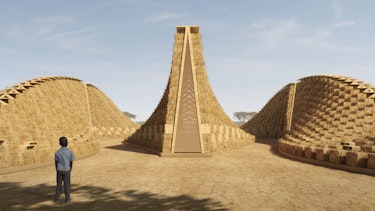
Credit: Dezeen
Architectural material trends for the foreseeable future encourage not only a sense of unprecedented integration with the environment but also a consideration for your own comfort and inner peace.
